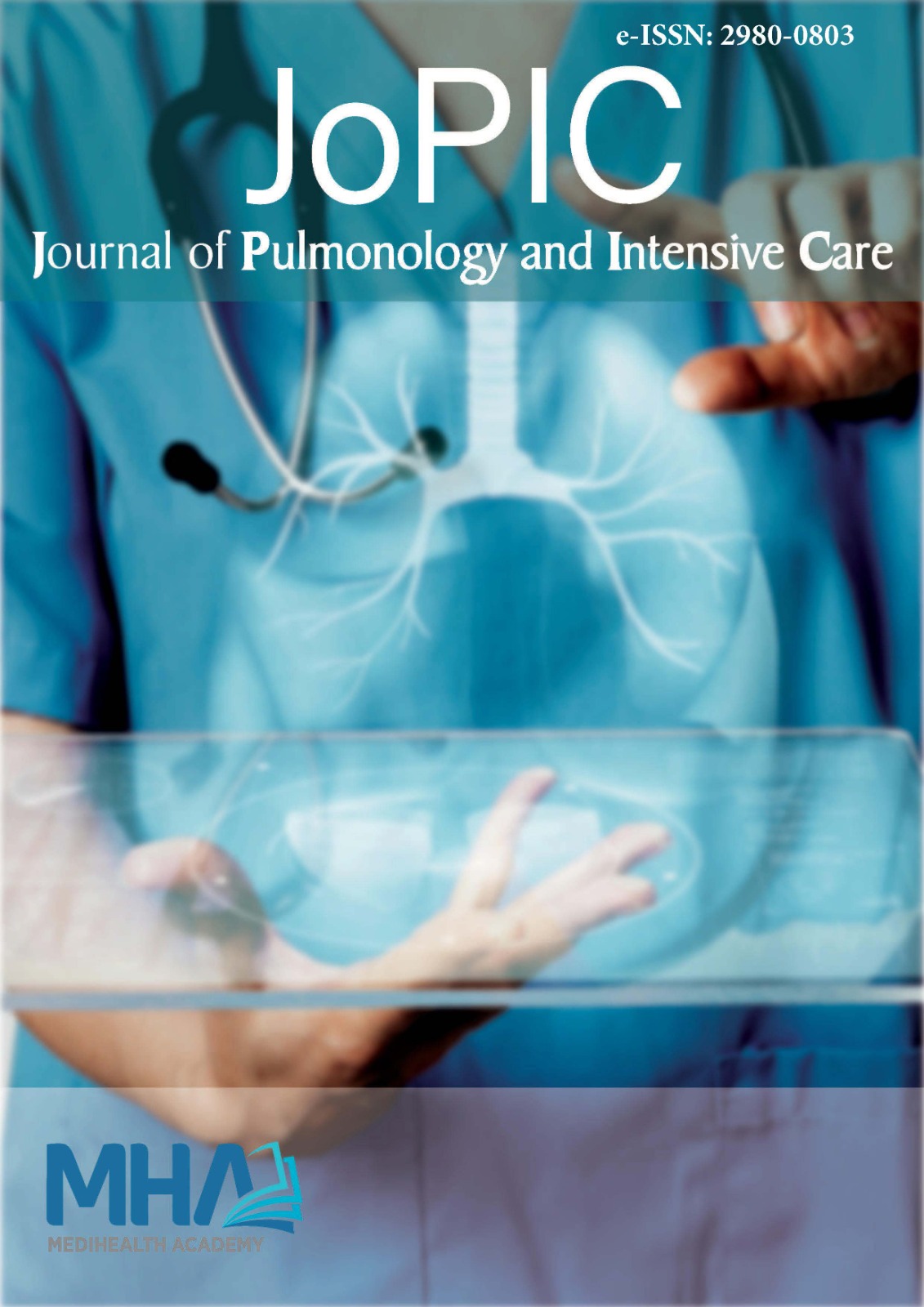1. Kathuria H, Hollingsworth HM, Vilvendhan R, Reardon C.Management of life-threatening hemoptysis. J Intens Care. 2020;5(8):23.
2. Mondoni M, Carlucci P, Job S, et al. Observational, multicenterstudy on the epidemiology of hemoptysis. Int J Cardiovasc Imaging.2018;51(1):1701813.
3. Munjal SK, Natarajan S, Vinay V, Meenakshisundaram A. Clinicalprofile of patients hospitalized with hemoptysis. J Family Med PrimCare. 2022;11(11):7267-7271.
4. Quigley N, Gagnon S, Fortin M. A etiology, diagnosis and treatment ofmoderate-to-severe hemoptysis in a North American academic center.ERJ Open Res. 2020;6(4): 00204-2020.
5. Davoodi M, Kordi M, Gharibvand MM, Shoushtari MH, Borsi H,Bahadoram M. Hemoptysis: comparison of diagnostic accuracy ofmulti detector CT scan and bronchoscopy. Glob J Health Sci. 2015;7(3):373-377.
6. O’Gurek D, Choi HY. Hemoptysis: evaluation and management. Am FamPhysician. 2022;105(2):144-151.
7. Davidson K, Shojaee S. Managing massive hemoptysis. Chest. 2020;157(1):77-88.
8. Fartoukh M, Demoule A, Sanchez O, et al. Randomized trial of first-line bronchial artery embolization for non-severe hemoptysis of mildabundance. BMJ Open Respir Res. 2021;8(1):000949.
9. Avasarala SK, Rickman OB. Endobronchial therapies for diagnosis,staging, and treatment of lung cancer. Surg Clin North Am. 2022;102(3):393-412.
10. Özgül MA, Turna A, Yıldız P, et al. Risk factors and recurrence patterns in203 patients with hemoptysis. Tuberk Toraks. 2006;54(3):243-248.
11. Abal AT, Nair PC, Cherian J. Hemoptysis: a etiology, evaluation andoutcome: a prospective study in a third-world country. Respir Med. 2001;95(7):548-552.
12. Arooj P, Bredin E, Henry MT, et al. Bronchoscopy in the investigation ofoutpatients with hemoptysis at a lung cancer clinic. Respir Med. 2018;139(1):1-5.
13. Fidan A, Özdoğan S, Oruç O, Salepçi B, Öcal Z, Çağlayan B. Hemoptysis:a retrospective analysis of 108 cases. Respir Med. 2002;96(9):677-680.
14. Kumar A, Gupta AK, Gautam AK, et al. Not all hemoptysis is tuberculosisthink of other etiologies. A lesson from a chest clinic in a rural tertiary carecenter in central India. Int JEnviron Res Public Health. 2016;5(8):1662.
15. Yıldırım Z, Turkkani MH, Bozkurt H, et al. Effects of the healthtransformation programme on tuberculosis burden in Turkiye. RespirMed. 2013;107(12):2029-2037.
16. Bade BC, Dela Cruz CS. Lung Cancer 2020: epidemiology, etiology, andprevention. Clin Chest Med. 2020;41(1):1-24.
17. Vidaillac C, Yong VFL, Jaggi TK, Soh MM, Choti SH. Gender differencesin bronchiectasis: a real issue? Breathe. 2018;14(2):108-121.
18. Martinez García MA, Villa C, Dobarganes Y, et al. RIBRON: theSpanish online bronchiectasis registry. Characterization of the first 1912patients. RIBRON: el registro español informatizado de bronquiectasias.Caracterización de los primeros 1.912 pacientes. Archivos deBronconeumologia. 2021;57(1):28-35.
19. Gordon SB, Bruce NG, Grigg J, et al. Respiratory risks from householdair pollution in low and middle income countries. Lancet. 2014;2(10):823-860.
20. Park JE, Seo JA, Cha JG, et al. Association between high blood pressurein the emergency department and cryptogenic hemoptysis. J Clin Med.2022;11(18): 5302.
21. Ittrich H, Bockhorn M, Klose H, Simon MD. The diagnosis and treatmentof hemoptysis. Dtsch Arztebl Int. 2017;114(21):371-381.
22. Uzun O, Atasoy Y, Fındık S, Atıcı AG, Erkan L. A prospective evaluationof hemoptysis cases in a tertiary referral hospital. Clin Respir J. 2010;4(3):131-138.
23. Revel MP, Fournier LS, Hennebique AS, et al. Can CT replacebronchoscopy in the detection of the site and cause of bleeding in patientswith large or massive hemoptysis? Am J Roentgenol. 2002;179(5):1217-1224.
24. Ünsal E, Köksal D, Çimen F, et al. Analysis of patients with hemoptysis ina reference hospital for chest diseases. Tuberk Toraks. 2006;54(1):34-42.
25. Kinoshita T, Ohbe H, Matsui H, Fushimi K, Ogura H, Yasunaga H. Effectof tranexamic acid on mortality in patients with hemoptysis: a nationwidestudy. Crit Care. 2019;23(1):347.
26. Parrot A, Khalil A, Roques S, et al. Management of severe hemoptysis:experience in a specialized center. Rev Pneumol Clin . 2007;63(3):202-210.
27. Rémy J, Arnaud A, Fardou H, Giraud R, Voisin C. Treatment of hemoptysisby embolization of bronchial arteries. Radiolog. 1977;122(1):33-37.
28. Tayal M, Chauhan U, Sharma P, Dev R, Dua R, Kumar S. Bronchialartery embolization. What further we can offer? Wideochir Inne TechMaloinwazyjne. 2020;15(3):478-487.
29. Fruchter O, Schneer S, Rusanov V, Belenky A, Kramer MR. Bronchialartery embolization for massive hemoptysis: long-term follow-up. AsianCardiovasc Thorac Ann.2015;23(1):55-60.
30. Conlan AA, Hurwitz SS, Krige L, Nicolaou N, Pool R. Massive hemoptysis.Review of 123 cases. J Thorac Cardiovasc Surg. 1983;85(1):120-124.
31. Gourin A, Garzon AA. Operative treatment of massive hemoptysis. AnnThorac Surg. 1974;18(1):52-60.
32. Lim RK, Tremblay A, Lu S, Somayaji R. Evaluating hemoptysishospitalizations among patients with bronchiectasis in the United States:a population-based cohort study. BMC Pulm Med. 2021;21(1):392.
33. Lee BR, Yu JY, Ban HJ, et al. Analysis of patients with hemoptysis in atertiary referral hospital. Tuberc Respir Dis. 2012;73(2):107-114.

